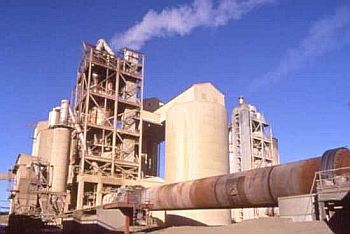Global warming due to manmade greenhouse gasses is a major threat to our planet. Burning fossil fuels is the main contributor to greenhouse gasses and to increased CO2 levels. We are interrupting Nature’s Carbon Cycle, which revolves carbon between the atmosphere, water, life and the solid earth itself. We are suddenly releasing (over decades, or a century or so) CO2 into our atmosphere which has been locked away in the earth as fossil fuels for hundreds of millions of years. This interruption of the Carbon Cycle is having an increasing warming effect on earth’s climate.
Aside from fossil fuels, other industries create CO2. One of the largest contributors is cement production. Cement production adds around 4% or 5% of manmade CO2 to the atmosphere globally (in the US, cement manufacture adds about 1% of CO2). This is a big problem, and many efforts are underway to come up with cements that produce less CO2 than Portland (regular) cement. However, this amount is not as bad as it first appears, as I try to explain below.
Cement production involves heating a mixture of rocks, clays and such until the mix undergoes a chemical change called calcining, involving thermal decomposition, phase changing, and removing the volatile compounds. In the case of Portland cement, the main volatile compound removed is CO2, which goes right into the atmosphere.
Once cement is mixed with aggregate and water to make concrete, it undergoes curing for a very long time. Curing is the process of forming hydration products from the cement and water, and also absorbing CO2 from the atmosphere. Yes, cement reclaims about60% of the CO2 it contributed to the atmosphere when it was manufactured as that same cement cures and forms hydration products.
It is important to acknowledge that cement manufacture is a major contributor to manmade greenhouse gasses, and to see the necessity of developing greener cements. It is also important to acknowledge that concrete acts as a carbon sink once it is formed, and that most of the CO2 produced from calcinations during manufacture ultimately returns from the atmosphere into the concrete.
In terms of CO2 that cement manufacturing and the concrete industry add to the atmosphere: it’s bad, but not as bad as it first looks. Much of the CO2 returns from the atmosphere into curing concrete.







No comments:
Post a Comment